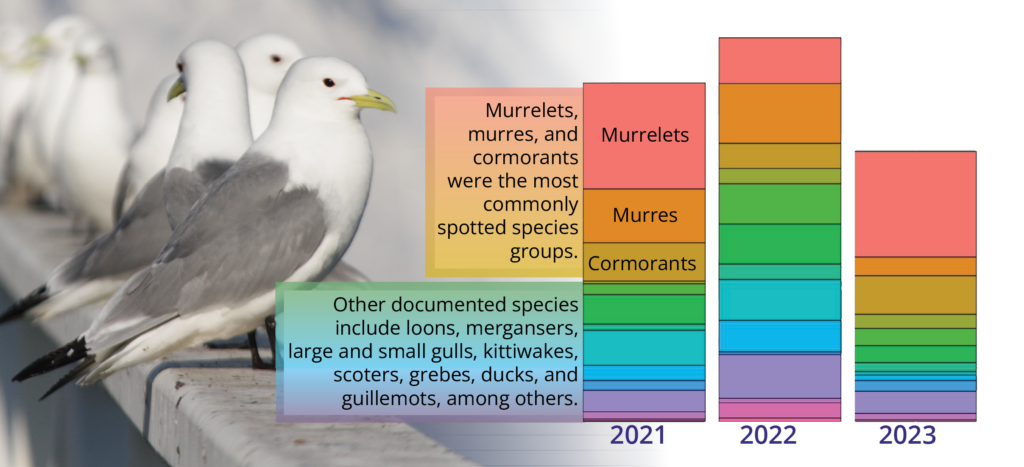Three years of data from surveys of marine bird species is now available online. The data is intended to help identify areas where marine birds tend to congregate in the winter, so that protective measures can be taken in the event of a spill in Prince William Sound.
Previously, most surveys of birds and mammals were conducted in Prince William Sound during spring, summer, or fall. This data from winter adds depth to our understanding of bird populations and the risks posed to birds from an oil spill.
Additionally, these surveys provide baseline monitoring information that can be used to understand the environmental impacts of terminal and tanker operations on marine bird species. The surveys were conducted in winter, which is an important time for marine bird survival given the typically harsh conditions.
Researchers identified 23 distinct bird species. Murrelets were the most common marine bird at 38% of sightings. Pelagic cormorants and common murres were the next most common.
Data available online
The results of the surveys are publicly available online. A map of the data is through the Alaska Ocean Observing System and NOAA’s Environmental Response Management Application (ERMA).
These surveys continue the work done by the Exxon Valdez Oil Spill Trustee Council’s Gulf Watch Alaska, which started monitoring in 2007. Datasets from 2007-2023 are available on the Alaska Ocean Observing System’s website (aoos.org).
